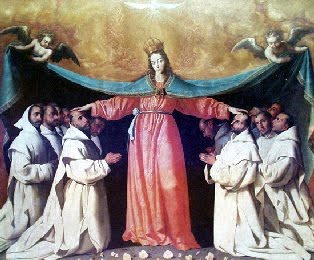 Dear Friends, for today’s Feast please offer a prayer for Father Lorenzo Maria and the monks of the Charterhouse of the Transfiguration in Vermont. Thank you!
Dear Friends, for today’s Feast please offer a prayer for Father Lorenzo Maria and the monks of the Charterhouse of the Transfiguration in Vermont. Thank you!Here’s a brief meditation on the Transfiguration provided by the Carthusians:
"Jesus took with Him Peter and James and John, and brought them up to a high mountain by themselves. And He was transfigured before them; and His garments became radiant and exceedingly white, as no launderer on earth can whiten them" (Mark, 9:2-3).
The Transfiguration of the Lord contains all the constitutive elements of Christian contemplation.
Jesus climbs up a mountain to pray, and He takes Peter, James and John with Him.
Suddenly, as He is praying, He is transfigured. (Matthew 17:2; Luke 9:29; Mark 9:2). Before Jesus looked like a man, now He is manifested as God-man. His face is still human, but now it now reflects His divinity. His clothes shed intense pure light. Peter, James and John do not see this with their ordinary vision: only their illumined eyes can see the resplendent Glory of the Father (Luke 9:32).
They are awe-struck. Then a cloud comes over and a voice declares: "This is My Son, My Chosen One; listen to Him." With these words, the Transfiguration ends and they go down the mountain again.
The Transfiguration of the Lord allows us to contemplate, not only the Mystery of Jesus, but also our own mystery. Prayer and contemplation, lived in pure faith during this life, are the beginning of our own Transfiguration.
The Carthusian monk is wholly dedicated to contemplation: sustained by the scriptures, and by the grace of the Holy Spirit led into the depths of his heart, the monk experiences in some sort the incomparable Beauty of the Light of God radiating from Christ.
"Beloved, we now are children of God, and it has not appeared as yet what we shall be. We know that, when He appears, we shall be like Him, because we shall see Him just as He is" (1 John 3:2).











